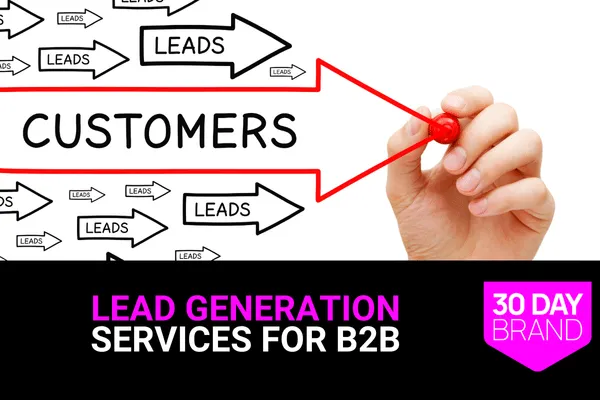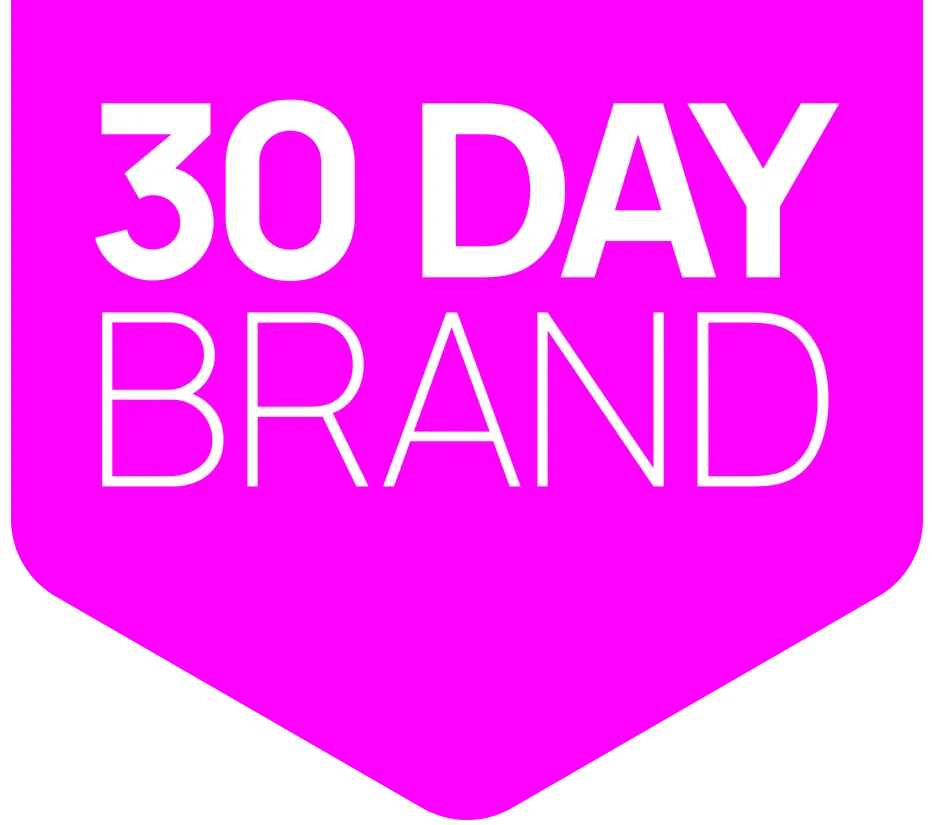
Lead Generation Services: Complete Guide to Predictable Growth
Why Lead Generation Services Matter
Many founder-led B2B firms and small businesses face the same problem: an unpredictable pipeline. Referrals dry up, outbound cold calls don’t scale, and ad spend disappears without ROI. Without a system, growth is inconsistent and stressful.
That’s why lead generation services exist. Lead generation services are specialized solutions that identify, attract, and qualify potential customers to fill a company’s sales pipeline. They matter because 61% of marketers say lead generation is their top challenge (HubSpot, 2024).
For consultants, agencies, and service providers, predictable lead generation means moving from feast-or-famine sales to consistent growth.
👉 Before outsourcing, ensure your business messaging framework is dialed in. Even the best system won’t work if your positioning isn’t clear.
Lead Generation Services Best Practices: 10 Core Items
Without a system, leads are inconsistent. With proven services, growth becomes predictable.
1. Clarify Your Ideal Client Profile (ICP)
Definition: An ICP outlines the specific customer segments most likely to buy, including firmographics (company size, industry), demographics, and triggers.
Why it matters: Companies targeting precise ICPs see 2× higher conversion rates (Forrester, 2023).
How to implement:
Audit existing clients to find your best-fit segment.
Interview clients to uncover decision drivers.
Map out company size, industry, budget, and buying triggers.
Use LinkedIn Sales Navigator and CRM filters to refine target lists.
Tools: HubSpot, LinkedIn Sales Navigator, Crunchbase.
Case study: A marketing consultancy broadened outreach to “all SMBs” and struggled. After narrowing to “B2B firms with 20–100 employees in tech services,” conversion rates doubled in 60 days.
Result: 2× higher conversion rates.
Time required: 1 week.
👉 Related: B2B lead generation agency guide.
2. Use Multi-Channel Outreach
Definition: Combining multiple outreach methods—email, LinkedIn, content, PPC, and calls—creates more consistent results.
Why it matters: Relying on one channel creates risk. Multi-channel campaigns generate 24% higher engagement rates (HubSpot, 2024).
How to implement:
Pair LinkedIn outreach with nurture emails.
Use retargeting ads to reinforce messaging.
Layer content offers (guides, webinars) for trust-building.
Test channel sequencing (email → LinkedIn → call).
Tools: Apollo.io, Lemlist, LinkedIn Ads, Google Ads.
Case study: A SaaS firm depended solely on email outreach. Response rates stalled at 3%. Adding LinkedIn + retargeting ads raised response to 9% and SQL volume increased by 41%.
Result: Higher engagement and better-qualified pipeline.
Time required: 2–4 weeks setup.
👉 Related: outsourced B2B lead generation.
3. Build Conversion-Focused Landing Pages
Definition: Landing pages capture lead information by exchanging value (guides, consultations, demos).
Why it matters: Dedicated landing pages convert 55% more than sending traffic to homepages (HubSpot, 2023).
How to implement:
Use a single, specific CTA per page.
Add proof elements (logos, testimonials, case studies).
Keep forms short (3–5 fields).
Test headlines and CTAs with A/B experiments.
Tools: Unbounce, Instapage, HubSpot CMS.
Case study: A consulting firm redirected ad traffic to its homepage and converted 0.7%. After launching a consulting-offer landing page with testimonials, conversion rose to 3.4%—a 4.8× improvement.
Result: More leads from the same ad spend.
Time required: 1–2 weeks.
👉 Related: website design for consultants.
4. Leverage Content Marketing Assets
Definition: Content assets like guides, webinars, and case studies build authority and fuel lead generation.
Why it matters: 67% of B2B buyers say content influences their decision (CMI, 2023).
How to implement:
Create a lead magnet (guide, checklist, template).
Gate premium content behind forms to capture leads.
Repurpose webinars into blog posts and LinkedIn clips.
Use case studies as bottom-funnel proof.
Tools: Canva, Wistia, HubSpot Forms.
Case study: A financial advisory firm created a “Retirement Planning Checklist” PDF. Within 90 days, it generated 240 new leads at a $6 CPL—10× cheaper than cold ads.
Result: Lower CPL and higher inbound credibility.
Time required: 3–4 weeks per asset.
👉 Related: brand storytelling guide.
5. Integrate Email Drip Campaigns
Definition: Automated email sequences that nurture prospects over time.
Why it matters: Companies that nurture leads with email generate 50% more sales-ready leads at 33% lower cost (Forrester, 2023).
How to implement:
Create a welcome sequence introducing your offer.
Build educational drips (case studies, tips, webinars).
Use behavior triggers (opened email, clicked link) to segment.
Add a clear CTA in each message.
Tools: ActiveCampaign, HubSpot, Mailchimp.
Case study: A B2B services firm added a 6-part drip sequence for new leads. Within 60 days, pipeline opportunities increased 37% while sales cycle length dropped 15%.
Result: More sales-ready leads at lower cost.
Time required: 1–2 weeks setup.
👉 Related: done-for-you marketing services.
6. Deploy LinkedIn Prospecting Systems
Definition: Structured outreach on LinkedIn using messaging, content, and engagement.
Why it matters: B2B marketers generate 50% more qualified leads from LinkedIn than other platforms (LinkedIn, 2024).
How to implement:
Optimize your LinkedIn profile for clarity (see LinkedIn consulting for small business).
Send connection requests with personalized notes.
Share authority content weekly.
Use automation carefully for scale (Apollo, Lemlist).
Follow up in 3–5 touches.
Case study: A consulting firm launched a structured LinkedIn system targeting CFOs. Within 90 days, it generated 112 connections, 37 SQLs, and 4 closed contracts worth $80k.
Result: Qualified leads directly from decision-makers.
Time required: 2–4 weeks setup, ongoing.
7. Implement Paid Ads for Scalability
Definition: Paid channels like Google Ads, Meta Ads, and LinkedIn for demand generation.
Why it matters: Paid ads create scalable lead flow when organic reach alone isn’t enough.
How to implement:
Start with intent keywords (Google PPC).
Test LinkedIn ads for decision-makers.
Use retargeting for warmer audiences.
Send clicks to conversion-optimized landing pages.
Tools: Google Ads, LinkedIn Ads, Meta Ads Manager.
Case study: A B2B training firm tested Google PPC with $3,000/month. Within 90 days, CPL dropped to $140, with a 4.5× ROAS.
Result: Scalable pipeline growth.
Time required: 2–3 weeks setup, ongoing optimization.
👉 Related: B2B demand generation agencies.
8. Use CRM and Automation Tools
Definition: CRMs track leads, automate workflows, and align marketing with sales.
Why it matters: B2B marketers using automation see 451% more qualified leads (Annuitas, 2024).
How to implement:
Use CRM to log every lead (HubSpot, Salesforce).
Automate follow-ups (emails, tasks).
Score leads by behavior and engagement.
Connect CRM with ad platforms for closed-loop reporting.
Case study: A SaaS firm moved from spreadsheets to HubSpot CRM. Lead response time dropped from 72 hours to 12 hours, boosting SQL close rates by 28%.
Result: Higher efficiency and better-qualified leads.
Time required: 2–3 weeks implementation.
9. Measure Lead Quality, Not Just Volume
Definition: Focus on sales-qualified leads (SQLs), not just raw form fills.
Why it matters: Volume without quality wastes sales time. Nurtured leads make 47% larger purchases (Marketo, 2023).
How to implement:
Define SQL criteria with sales.
Use scoring (budget, authority, need, timeline).
Track conversion from MQL → SQL → Closed Won.
Drop low-quality sources fast.
Tools: HubSpot, Marketo, Salesforce.
Case study: A consulting firm generated 400 MQLs monthly. After filtering with lead scoring, they focused on the top 30%. Close rates jumped from 12% to 29%.
Result: Bigger deals and higher win rates.
Time required: 2 weeks to define + ongoing monitoring.
10. Align Sales and Marketing Teams
Definition: Collaboration ensures leads are followed up quickly and effectively.
Why it matters: Companies with aligned sales + marketing see 67% higher efficiency (Marketo, 2023).
How to implement:
Define shared goals and KPIs.
Hold weekly pipeline syncs.
Use one CRM dashboard.
Implement SLAs for follow-up speed.
Case study: A B2B firm had leads ignored by sales. After adding a shared CRM and weekly syncs, sales accepted 92% of marketing leads, boosting pipeline revenue 26%.
Result: Faster follow-up, better close rates.
Time required: 2–3 weeks alignment.
👉 Related: B2B lead generation companies.
Lead Generation Services Implementation Guide
Step 1: Audit Current Lead Sources
Review inbound vs outbound performance. Tools: GA4, CRM reports.
Result: Identify gaps and inefficiencies.
Step 2: Define KPIs and Budget
Set targets for SQLs, CAC, and ROI.
Result: Measurable goals with financial guardrails.
Step 3: Select Lead Generation Channels
Choose SEO, content, LinkedIn, email, PPC.
Result: Balanced channel mix.
Step 4: Build Campaign Assets
Develop landing pages, emails, and offers.
Result: Ready-to-launch campaigns.
Step 5: Launch, Monitor, and Optimize
Track CPL, SQLs, and ROI weekly. Test and refine continuously.
Result: Predictable pipeline growth.
Metrics & Measurement for Lead Generation Services
Tracking ROI separates winning systems from wasted spend. Key benchmarks:
Companies that nurture leads generate 50% more sales-ready leads at 33% lower cost (Forrester, 2023).
B2B marketers using automation increase qualified leads by 451% (Annuitas, 2024).
61% of marketers rank lead generation as their top priority (HubSpot, 2024).
Inbound leads cost 61% less than outbound leads (HubSpot, 2023).
Nurtured leads make 47% larger purchases (Marketo, 2023).
Case study: A SaaS provider implemented lead nurturing and automation. CAC dropped 29%, and deal size increased 35% in 6 months.
Common Mistakes in Lead Generation
Chasing volume, not quality – 500 unqualified leads are worse than 50 SQLs.
Over-relying on one channel – if LinkedIn dries up, pipeline stalls.
Buying cheap lead lists – most are outdated, damaging brand reputation.
No CRM integration – losing leads due to manual follow-up gaps.
Unclear ICP – wasting spend on the wrong audience.
No alignment with sales – marketing hands over leads sales won’t pursue.
Not testing landing pages – conversion rates stay stuck.
Failing to nurture – cold leads vanish without follow-up.
👉 Related: outsourced B2B lead generation.
FAQ: Lead Generation Services
What are lead generation services?
They are specialized solutions that attract, qualify, and deliver leads for your business through channels like email, LinkedIn, SEO, PPC, and content marketing.
How much do lead generation services cost?
Freelancers: $1,000–$3,000/month
Agencies: $3,000–$10,000/month
Enterprise solutions: $15,000+/month
Pricing depends on volume, quality, and scope.
Are lead generation services worth it for small businesses?
Yes. Outsourcing provides tools, systems, and expertise SMBs lack in-house. Inbound leads cost 61% less than outbound (HubSpot, 2023).
What’s the difference between inbound and outbound lead generation?
Inbound: content, SEO, email—attracting leads.
Outbound: cold outreach, ads—proactively targeting leads.
Best results come from blending both.
How long does it take to see ROI?
PPC: 1–2 months
Email: 1–2 months
SEO: 3–6 months
LinkedIn outreach: 2–3 months
ROI builds faster when systems run in parallel.
What’s the role of automation in lead generation?
Automation improves speed, tracking, and personalization. Companies using automation report 451% more qualified leads (Annuitas, 2024).
Can I outsource lead generation?
Yes. Outsourced agencies offer scale and expertise, but ROI depends on your ICP clarity and messaging.
How do I know if leads are qualified?
Define SQL criteria (budget, authority, need, timeline). Use lead scoring to separate quality from noise.
What industries benefit most from lead generation services?
Consulting, SaaS, B2B services, financial services, and healthcare. Anywhere sales cycles are long and complex.
Should I hire a lead generation agency or build in-house?
Agency: faster setup, proven systems, scalable.
In-house: more control, long-term investment.
Many firms start with agencies, then build in-house teams once revenue supports it. See done-for-you vs in-house.
Let’s Build Your Predictable Pipeline: Next Steps
Unpredictable lead flow kills growth. The right systems and services create consistent pipelines.
Run your free Brand Message Analyzer to ensure your messaging converts leads into clients before scaling lead generation.










